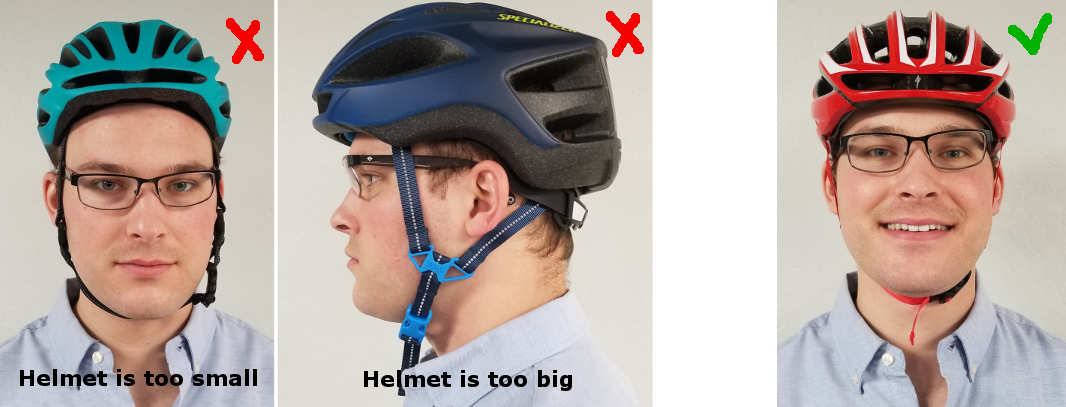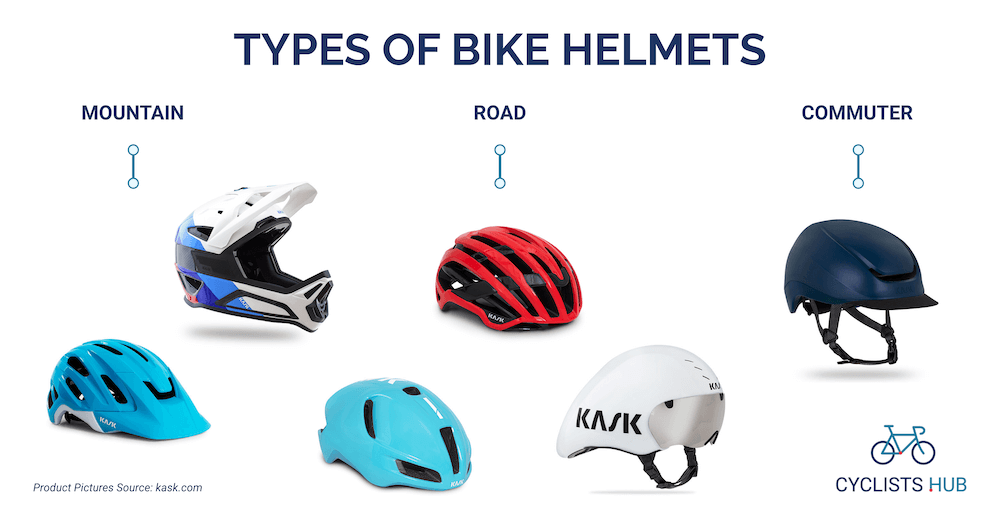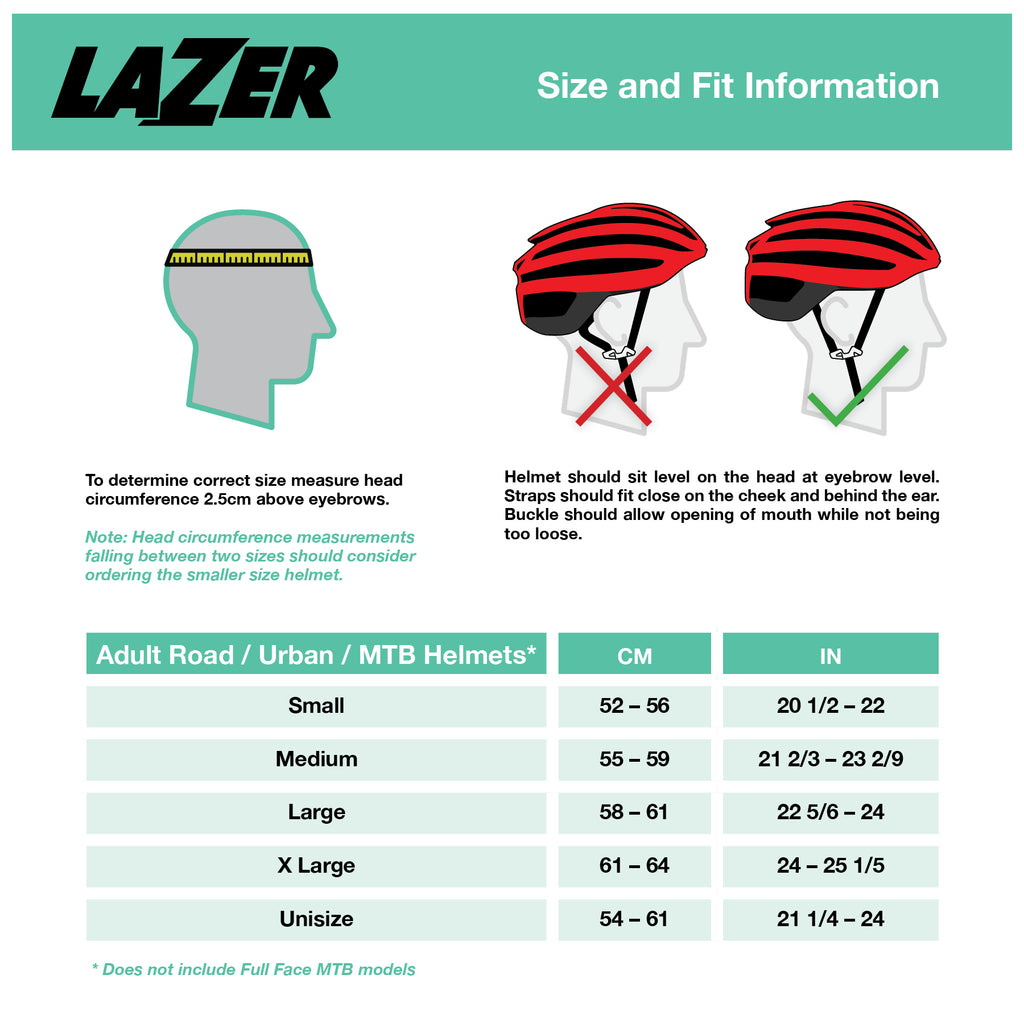To choose a bike helmet, ensure it fits snugly and meets safety standards. Prioritize comfort and ventilation.
Choosing the right bike helmet is crucial for safety and comfort. A well-fitting helmet can protect you in case of an accident. It should feel snug on your head without being too tight. Look for helmets that meet recognized safety standards like CPSC, ASTM, or Snell.
Consider the type of riding you do—road, mountain, or urban—as it influences the helmet design. Ventilation is essential for staying cool during rides. Adjustable straps and a secure fit system enhance comfort. Investing time in selecting the right helmet ensures a safer and more enjoyable cycling experience.
Importance Of A Bike Helmet
The importance of a bike helmet cannot be overstated. A helmet is your primary defense against head injuries during a bike ride. It can save your life. Understanding why a bike helmet is essential will help you make an informed choice.
Safety Statistics
Wearing a bike helmet significantly reduces the risk of head injuries. According to the National Highway Traffic Safety Administration (NHTSA), helmets reduce the risk of head injuries by 60%. The Centers for Disease Control and Prevention (CDC) states that helmets reduce the risk of severe head injury by 85%. These statistics highlight the crucial role helmets play in safety.
Legal Requirements
In many places, wearing a bike helmet is the law. These laws aim to protect cyclists, especially young riders. Failure to comply can result in fines. The table below shows a few places with mandatory helmet laws:
| Location | Helmet Requirement |
|---|---|
| California, USA | Mandatory for riders under 18 |
| Australia | Mandatory for all ages |
| New Zealand | Mandatory for all ages |
Check your local laws to understand the specific requirements in your area. Ensuring compliance not only keeps you safe but also avoids legal issues.
Types Of Bike Helmets
Choosing the right bike helmet is crucial for your safety. There are various types of helmets for different biking needs. Knowing the right type can make your ride safer and more comfortable.
Road Helmets
Road helmets are designed for speed and aerodynamics. They are lightweight and have plenty of ventilation. This type is perfect for cyclists who ride on paved roads.
| Feature | Description |
|---|---|
| Weight | Lightweight for faster speeds |
| Ventilation | Excellent airflow for cooling |
| Design | Sleek and aerodynamic |
Mountain Helmets
Mountain helmets are built for rough terrains. They offer more coverage and protection. These helmets often have visors to shield your eyes from the sun and branches.
- Extra coverage for the back of the head
- Strong and durable construction
- Integrated visors for eye protection
Commuter Helmets
Commuter helmets are ideal for daily rides to work or school. They combine safety with comfort. Many come with built-in lights for better visibility at night.
- Comfortable padding for long rides
- Simple design for everyday use
- Built-in lights for added safety
Key Features To Look For
Choosing the right bike helmet is crucial for safety and comfort. This guide will help you understand the key features to look for in a bike helmet. These features include fit and comfort, ventilation, and weight. Let’s dive into each one of them.
Fit And Comfort
A bike helmet must fit well to offer maximum protection. Here are some steps to ensure a good fit:
- Measure your head’s circumference using a tape measure.
- Choose a helmet size that matches your measurement.
- Adjust the straps so the helmet sits snugly on your head.
Comfort is also essential. Look for helmets with padding inside and adjustable features. These will help you customize the fit. A well-fitted helmet will stay in place and not move around.
Ventilation
Good ventilation keeps your head cool during rides. Look for helmets with multiple vents. More vents mean better airflow. This is especially important for long rides or hot weather.
Some helmets have channels inside to guide the airflow. This helps in keeping your head cool and sweat-free.
Weight
The weight of a helmet affects comfort. A heavy helmet can strain your neck and shoulders. Look for a lightweight helmet that does not compromise on safety. Lightweight helmets are usually made from advanced materials like polycarbonate or carbon fiber.
Remember, a lighter helmet will make your ride more enjoyable.
Safety Standards And Certifications
Choosing the right bike helmet is crucial for your safety. Understanding the safety standards and certifications can help you make an informed decision. These standards ensure that the helmet meets specific safety criteria to protect your head during an accident.
Cpsc
The Consumer Product Safety Commission (CPSC) is a US-based organization. CPSC certification means the helmet has passed rigorous testing. The tests check for impact resistance and strap strength. Look for the CPSC sticker inside the helmet.
En1078
The EN1078 standard applies to helmets sold in Europe. This certification covers helmets for cyclists and skaters. It tests for shock absorption, retention system strength, and field of vision. A helmet with EN1078 certification offers reliable protection.
Astm
The American Society for Testing and Materials (ASTM) provides another set of standards. ASTM certification often focuses on specific helmet types. For example, ASTM F1447 is for recreational biking. Each ASTM standard ensures the helmet meets safety requirements for its intended use.
| Certification | Region | Focus |
|---|---|---|
| CPSC | United States | Impact resistance, strap strength |
| EN1078 | Europe | Shock absorption, retention system, field of vision |
| ASTM | International | Various helmet types, specific uses |
How To Measure Your Head
Choosing the right bike helmet is crucial for your safety. One of the key steps is knowing how to measure your head correctly. This ensures a perfect fit, providing maximum protection and comfort.
Tools Needed
To measure your head, you’ll need a few basic tools:
- Flexible Measuring Tape: A cloth or plastic tape works best.
- Mirror: To help you see the tape’s position.
- Pen and Paper: For noting down measurements.
Step-by-step Guide
- Position the Tape: Place the measuring tape around your head. Start just above your eyebrows and ears.
- Check the Fit: Ensure the tape is level and snug. It should not be too tight or loose.
- Read the Measurement: Look in the mirror to read the measurement. Note it down on your paper.
- Double-Check: Repeat the process to ensure accuracy. Consistent measurements confirm a correct size.
Use the table below to match your head measurement with helmet sizes:
| Head Measurement (cm) | Helmet Size |
|---|---|
| 51 – 55 | Small |
| 55 – 59 | Medium |
| 59 – 63 | Large |
Measuring your head accurately ensures you pick the right bike helmet. This simple process can make a big difference in your safety.

Credit: smf.org
Helmet Maintenance
A well-maintained helmet ensures your safety on the road. Regular care keeps your helmet in top condition. Proper maintenance extends its lifespan and effectiveness. This section provides essential tips on maintaining your bike helmet.
Cleaning Tips
Cleaning your helmet is vital for hygiene and durability. Follow these simple steps to keep it clean:
- Remove the padding: Take out the inner pads for washing.
- Use mild soap: Clean the shell with mild soap and water.
- Rinse thoroughly: Ensure no soap residue remains.
- Air dry: Let the helmet dry naturally. Avoid direct sunlight.
- Clean straps: Wipe the straps with a damp cloth and mild soap.
When To Replace
Knowing when to replace your helmet is crucial for safety. Here are the key indicators:
- After a crash: Replace your helmet immediately after any impact.
- Visible damage: Cracks or dents indicate the need for replacement.
- Old age: Replace helmets every 3-5 years.
- Worn padding: Replace if the padding is no longer comfortable or secure.
| Condition | Action |
|---|---|
| After a crash | Replace immediately |
| Visible damage | Replace immediately |
| Old age (3-5 years) | Replace |
| Worn padding | Replace padding or helmet |
Cost Vs. Quality
Choosing the right bike helmet involves balancing cost and quality. It’s important to find a helmet that offers great protection without breaking the bank. This section will guide you through different price ranges and help you make an informed decision.
Budget Options
For those on a tight budget, there are still many good-quality helmets available. These helmets might not have all the bells and whistles, but they provide essential protection.
- Basic foam padding
- Simple ventilation system
- Standard safety certifications
Below is a table of some popular budget helmets:
| Brand | Model | Price |
|---|---|---|
| Brand A | Model X | $30 |
| Brand B | Model Y | $40 |
High-end Options
High-end helmets come with advanced features and superior materials. These helmets often provide better comfort, durability, and safety.
- Enhanced ventilation systems
- Lightweight materials
- Advanced safety technologies
Here is a table of some high-end helmets:
| Brand | Model | Price |
|---|---|---|
| Brand C | Model Z | $150 |
| Brand D | Model W | $200 |

Credit: www.youtube.com
Additional Safety Tips
Besides picking the right bike helmet, follow extra safety tips. These tips ensure maximum protection and comfort while riding.
Proper Adjustment
A helmet must fit properly to protect you. Follow these steps for a perfect fit:
- Position: Place the helmet level on your head. The front edge should be one inch above your eyebrows.
- Straps: Adjust the side straps to form a V-shape under your ears. The chin strap should be snug but comfortable.
- Tightness: Use the adjustment wheel at the back. Ensure the helmet is tight enough to stay in place.
Visibility Enhancements
Increase your visibility to stay safe on the road. Here are some tips:
- Reflective Stickers: Add reflective stickers to your helmet. This makes you more visible at night.
- Bright Colors: Choose helmets with bright colors. They are easier to spot in traffic.
- Helmet Lights: Attach a small light to your helmet. It helps in low-light conditions.

Credit: www.cyclistshub.com
Frequently Asked Questions
What Size Bike Helmet Should I Get?
Choose a helmet that fits snugly on your head. Measure your head circumference and match it to the helmet size chart provided by the manufacturer.
How Often Should I Replace My Bike Helmet?
Replace your bike helmet every 3-5 years. Also, replace it immediately if it’s involved in a crash or shows signs of damage.
What Are The Key Features Of A Good Bike Helmet?
A good bike helmet should be lightweight, well-ventilated, and have an adjustable fit system. Look for safety certifications like CPSC, ASTM, or EN.
Can I Use A Bike Helmet For Other Sports?
Bike helmets are specifically designed for cycling. For other sports, use helmets designed for those activities to ensure proper protection and safety.
Conclusion
Choosing the right bike helmet ensures safety and comfort on the road. Consider fit, style, and safety features. Always check for certification standards. A well-chosen helmet can make your biking experience much more enjoyable and secure. Invest in a quality helmet for peace of mind and protection.
Happy riding!


